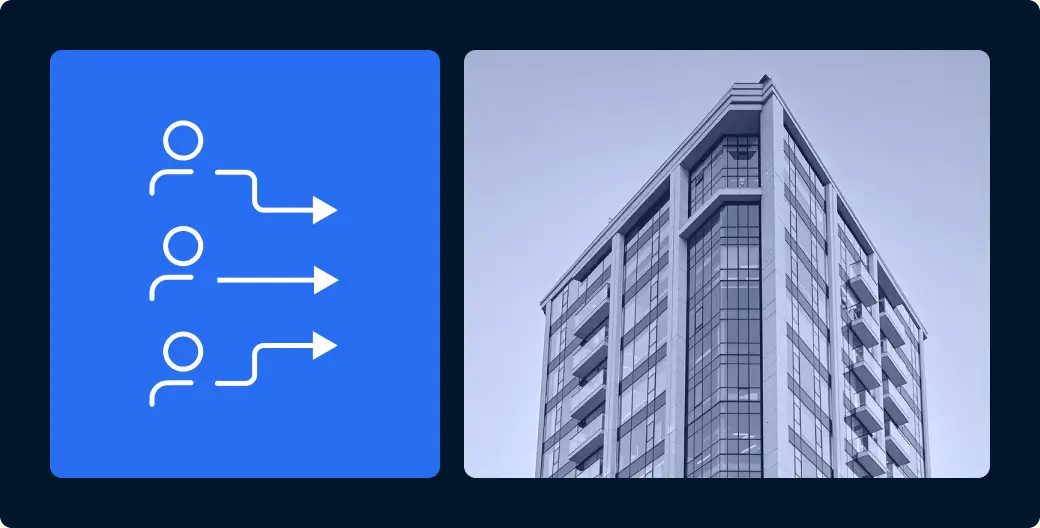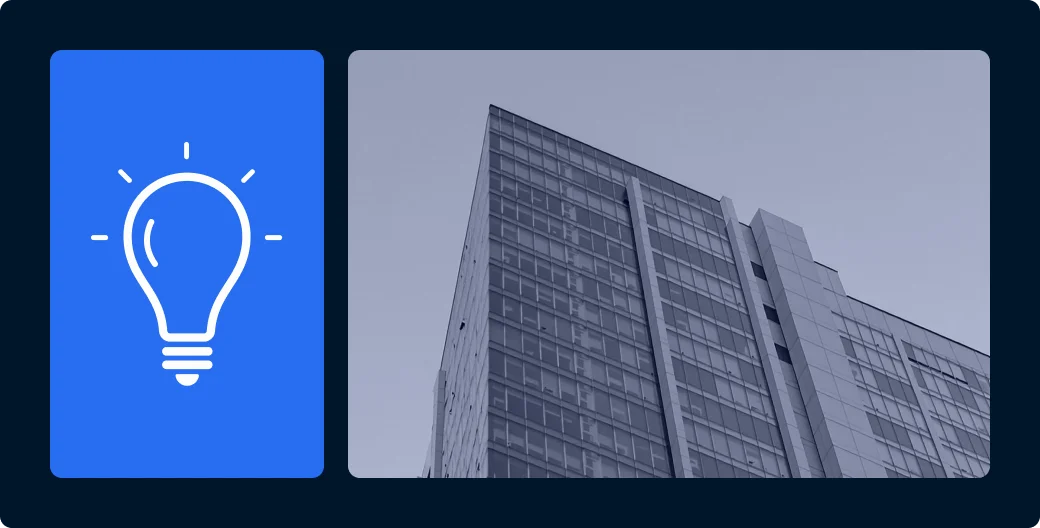Legacy tools and manual processes create challenges for real estate firms. Spreadsheets, fragmented cloud drives, and generic software fail to meet modern demands.
Using these outdated solutions can cause inefficiencies, investor frustration, and lost opportunities. GPs need better ways to provide investors with information, oversee documents, and respond quickly.
Investor management software tackles these problems head-on by providing robust CRM, investor portal, and document management. End-to-end solutions help firms stay successful in a rapidly changing industry.
Effective solutions can help GPs experience a 70% increase in investor engagement.
Challenges faced by general partners in investor management
Managing investors can be demanding for real estate companies. The main hurdles include communicating with investors, calculating distributions, and securing data. Let’s break down the challenges:
Investor communication and reporting
- Using email and spreadsheets for investor communications causes delays and errors and reduces transparency.
- Manual processes make providing timely investor statements and reports challenging.
Managing investor distributions
- Calculating classes, preferred returns, and carry waterfalls is complex.
- Relying on spreadsheets increases the risk of payout errors.
Data security concerns in investor management
- Insecure environments make it difficult to protect investor data and meet regulations like GDPR and CCPA.
- Legacy systems lack the safeguards to protect against unauthorized access and breaches, leading to potential legal and financial consequences.
- Securing financial data is a top priority, given that Statista reports indicate nearly 28% of 2023 phishing attacks targeted financial information.
Here is where investor management software steps in, addressing these challenges.
What is investor management software?
Investor management solutions help real estate GPs streamline investor relations with centralized data management, secure investor portals, communication tools, document management, automated distribution calculations, and reporting.
Benefits of investor management software for GPs
Such software is pivotal in supporting LPs throughout the investment lifecycle, from communication to reporting. Here are some key advantages:
- Elevating GP-LP Relations: Secure and efficient communication between GPs and investors enables real-time investment performance status and enhances investor trust.
- Enhancing investor engagement: LPs gain 24/7 access to their account, data, and new deal opportunities through investor portals, leading to increased engagement.
- Customized reporting for investor satisfaction: Tailored reports meet individual preferences, improving investor satisfaction.
- Transparency in distribution calculations: Automation of distribution calculations ensures precision and transparency for investors.
- Securing GP-investor communication: GPs and investors communicate securely, eliminating the need to transmit sensitive information over email.
Key features to look for in investor management software
Different software solutions in the market vary in their capabilities, features, and support. Choosing the right software is a critical decision.
That’s why we compiled a list of must-have features that are the base for any investor management software worth its salt.:
Accurate distribution calculations
Being able to calculate distributions accurately is essential in investor management software. It reduces costly errors, gives GPs assurance, and instills trust in investors regarding their payouts.
Document management and storage
The software should include secure and centralized document management. This feature enables GPs to manage and safely share files with investors. It enhances engagement by giving investors self-service access to statements and tax forms.
Secure communication tools
Built-in messaging functions help GPs and investors communicate securely within the platform. This eliminates the need to send sensitive information over email and protects investor data.
Investor portal
An intuitive and easy-to-use investor portal is key in any software. It empowers investors by providing 24/7 access to their accounts and data and frees GPs from repetitive status inquiries and reporting requests by investors. Investors have more control and visibility, and GPs have more time on their hands.
Integration and scalability
The integration and scalability of the software play a pivotal role in supporting GPs as their client base expands. It allows for the seamless addition of new investors and enables investors to continue using a familiar platform as their investments with the firm expand.
How to choose the right investor management software
When selecting an investor management platform, consider your portfolio size, number of investors, and compatibility with all your investor types. Here are the considerations you should have when making your decision:
Assess compatibility with investor types
Begin by assessing the compatibility of the software with various investor types. Look for solutions to support the needs of institutional investors, family offices, or other investor categories. The software should be flexible and adaptable to accommodate diverse investor requirements.
Evaluate scalability for investor growth
Consider the software’s scalability to the number of investors. Ask questions like:
- Can the software handle the growth in the number of investors over time?
- Is it equipped to manage portfolios with varying sizes and complexities?
- Does it offer features that allow you to quickly onboard new investors without causing disruptions to operations?
The software solution should not only meet your current needs but have the ability to grow alongside your business and your investor base.
Identify specific needs and requirements
In addition to compatibility and scalability, identify your firm’s specific needs and requirements. Create a checklist of must-haves based on your operations.
Evaluate different software solutions
Once you’ve defined your compatibility, scalability, and specific requirements, it’s time to assess different software platforms. Search for reviews on comparison websites like G2 and Captera. Evaluate their capabilities, integrations, and security measures. Validate that the reporting and visibility features align with your firm’s and investors’ expectations.
Ask for referrals and testimonials
Contact software providers for references and testimonials to gain deeper insights into the software’s effectiveness. Ask about their experience catering to various investor types and how well the software supports LP management.
How Agora’s investor management software benefits real estate investment firms
Agora offers a highly-rated, all-in-one real estate investment management platform recognized for its excellent reviews on Capterra and G2. This comprehensive system simplifies investor management by providing features such as an investor portal, CRM, fundraising tools, document management, automatic reporting, tax assistance, and ACH payments.
Real estate investor portal
Agora’s customizable real estate investor portal streamlines GP-investor relations, enhancing security and transparency. Firms like Lightwater Capital reduced investor inquiries by providing consistent reporting capabilities through the system.
With the investor portal:
- GPs can market offerings and manage LP communication
- GPs and LPs can communicate easily
- LPs have access to a personalized investor dashboard
- Firms can customize branding and preferred metrics
- LPs can subscribe easily to new offerings
- GPs can send reports, statements, and notices to be displayed on their LPs’ portals
Customized CRM for real estate investor management
Agora’s Integrated real estate investor CRM centralizes investor information into customizable profiles. Box Equities benefited from this feature by using Agora’s CRM to enhance team collaborations and task management.
The CRM streamlines coordination across the investor lifecycle. It helps with key processes like investor prospecting, document management, capital calls, ownership updates, and payout distributions.
Centralized and secure document management
Agora’s real estate document management software provides centralized and secure document management. YDLP used Agora to enhance investor trust by eliminating the need to send sensitive data over email.
Key capabilities include:
- Centralized storage to file all investor documents securely in the cloud
- Efficient sorting and filtering tools to retrieve investor documents quickly
- Advanced search functionality to locate necessary materials easily
- Secure sharing capabilities to share documents with investors
Automated reporting and tax operations
With Agora, users can generate customized investor reports, including statements, capital calls, and distribution notices.
Asset managers like Olive Tree Management have leveraged the platform to expedite tax distributions. By delivering K-1s digitally with Agora’s automation tool, the firm distributed forms to investors in just a few hours instead of days.
Ease of ACH payments
Investor relations staff can execute all investor payments with a single click from within the Agora platform and distribute funds into investor bank accounts with Agora’s ACH payments automation.
More than just investment tracking
Many platforms offer basic tracking and reporting but can’t optimize investor management. If your solution lacks key features like customizable portals, secure document management, and distribution processing, it may be time for an upgrade.
Agora provides an all-in-one solution to help firms maximize efficiency, compliance, and growth. By centralizing investor information, automating workflows, and providing industry-leading security, Agora empowers firms to deliver an exceptional investor experience.
Ready to learn more about Agora and see how to transform your operations?










